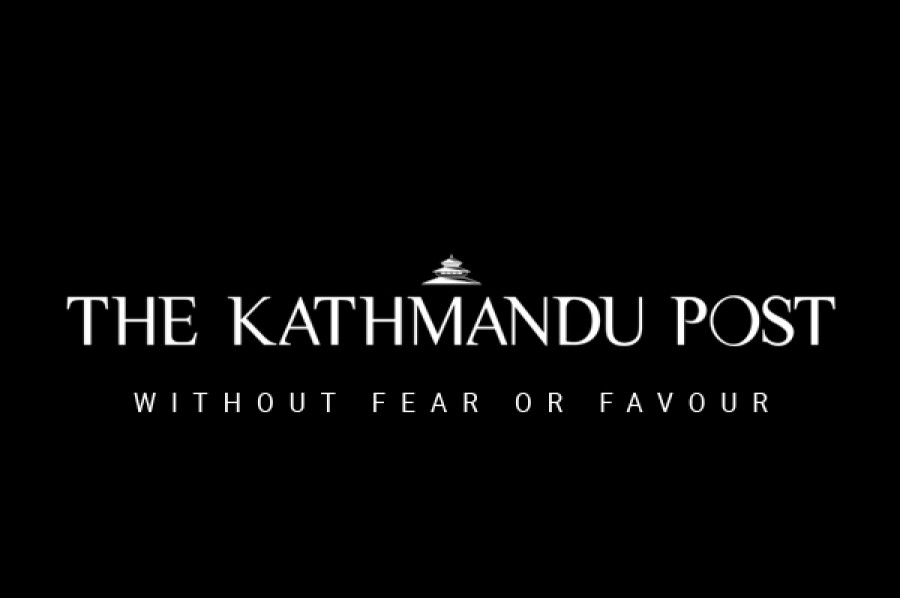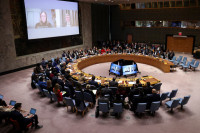Opinion
Fast track to lost track
Given Nepal’s enormous infrastructure gap, its lack of political will and consensus to develop large infrastructure facilities confounds rational thought.
Semanta Dahal
Given Nepal’s enormous infrastructure gap, its lack of political will and consensus to develop large infrastructure facilities confounds rational thought. Many of Nepal’s efforts to add infrastructure have failed due to the inability to spend its annual capital expenditure budget on infrastructure, the lack of a legal framework that encourages private investment, and the protracted political wrangling. Examples include the Arun III Hydroelectricity Project (Arun III) and the Kathmandu-Tarai Fast Track Project (KTFT) which was shelved recently.
Owing to their great size and their benefits, both Arun III and KTFT were touted as being “game changer” projects. During the 1990’s, Arun III would have added 404 MW to the energy-strapped Nepal, but unfortunately, the World Bank Group withdrew its support, citing reasons including “difficulty in gaining popular support” and “concern regarding Nepal’s management capability.” KTFT met a similar fate in 2015 because the political class found itself unable to understand the underlying legal and financial complexities of a privately-financed infrastructure project.
The Mahabharat range divides the nation’s Capital from its fertile plains in the Tarai. Although the aerial distance is less than 40km, the hairpin highway connecting the two regions requires a travel time of up to 10 hours. Nepal’s only international air link, the Tribhuvan International Airport in Kathmandu, is highly overused and poorly maintained. This has caused the government to consider developing a second international airport in Nijgadh in the Tarai. However, because a second airport that relies on inadequate roads would be of limited utility, the new airport project also requires an expressway which would connect it to the Capital. As designed, KTFT will reduce the distance between Kathmandu and Nijgadh to 95km, a distance that can be covered in an hour.
The legislation enabling the private sector to finance and develop infrastructure was passed in 2006. In 2008, pursuant to this new Private Financing in Build and Operation of Infrastructures Act (PFBOI Act), the government conducted a global procurement process to select a private developer to develop KTFT on the Build, Operate and Transfer (BOT) model. Although Nepal had taken its first step in encouraging private sector participation, the effort, unfortunately, attracted little interest. The reason was simple: The number of vehicles expected to use the road would not generate the project’s required revenue. In 2012, a second bidding process also failed. Then, in 2014, the government sought to remedy the situation by announcing insurance over the minimum required revenue for the winning bidder. It worked. In September 2014, a third tender attracted credible Indian infrastructure majors. In February 2015, the government invited the Infrastructure Leasing & Financial Services (IL&FS) consortium to participate in additional negotiations with a view to grant a concession.
Minimum Revenue Guarantee
The risk mitigating tool—known as the Minimum Revenue Guarantee (MRG)—was introduced by the government in its 2014 budget. The specific target of this tool, long in use in Latin America and Korea, was KTFT. Pursuant to the bidding terms, the government bound itself to assume the traffic risk during the operation period and to compensate the developer if the revenue collected did not reach a specified level. In its proposal, IL&FS, proposed an MRG ranging from $234 to $389 million annually for the 25-year operation period. This was based on IL&FS’s estimated total project cost of $1,970 million. However, IL&FS’s proposed contingent liability was not acceptable to the government. As a result, the government adopted a strategy to minimise the project’s total cost by offering arrangements for a subsidised debt financing for the sponsor.
Through the process, the Indian government and its export finance institution, the Exim Bank of India, expressed willingness to extend a line of credit of $750 million at a subsidised interest rate of 1 percent. In response, the Nepal government determined to on-lend the $750 million to IL&FS at the interest rate of 3 percent, resulting in a decrease in project cost from the initial $1,970 million to $1,296 million. Subsequently, after additional rounds of negotiations, IL&FS offered a revised fixed yearly MRG of $150 million.
Attacks on MRG
The MRG arrangement, however, was not without its detractors. There were concerns that the government would be assuming most of the risks because of unpredictable traffic demands. To some extent, this was true. By committing to provide MRG subsidies, the government may have unnecessarily allowed the project sponsor to recoup unreasonably high profits.
The project’s opponents effectively argued that the MRG model would compromise Nepal’s national interest by allowing an Indian investor to make profit at the expense of the taxpayer’s money. Others argued that the PFBOI Act prevented the government from providing such revenue guarantees. Ultimately, these arguments were presented before the Supreme Court, which issued an interim order staying the award to IL&FS. As a result, on December 22, 2016, the government terminated negotiations with the consortium.
While the criticisms levelled against the MRG mechanism were not without merit, they were also laden with misapprehensions about legal and financial issues. In fact, the PFBOI Act did not bar MRG subsidies. The government’s 2014 budget unambiguously introduced and allowed the tool.
It was also necessary to understand and communicate the financial complexities of the project. The misconception that the government would pay a total of $3,750 million to the concessionaire over a period of 25 years should have been dispelled at the outset. The $150 million was not an annuity payment. The government was only obligated to pay the shortfall between the revenue generated and the threshold amount. Instead, whether the threshold amount of $150 million was appropriate should have been the subject of serious financial analysis and demand forecasts.
Further, as project sponsors are well known for overstating traffic forecasts, the possibility of inaccurate forecasts had to be minimised. This was done by way of a two-pronged contractual mitigation strategy which included the sharing of 80 percent of the revenue surplus beyond the MRG threshold and a guarantee on the traffic forecast. The compromise was never achieved.
Enabling private investment
The negotiations for the KTFT expressway concession were punctuated by a loud public outcry against the MRG model. However, no such narrative, however intense, should have been allowed, because of the need to understand the legal and financial issues related to the project. Nepal’s first ever effort to implement a highway project under a PPP-BOT model had to be terminated. The government has now taken a decision to undertake the project employing its own funds and creating a special purpose vehicle. This may preclude the benefits of PPP arrangements. The government’s investment alone will never be sufficient to bridge Nepal’s infrastructure gap. According to a World Bank Report, Nepal needs to spend $13-18 billion on infrastructure by 2020 to bridge the gap. Some part of this investment will have to come from the private sector. However, the private sector cannot be expected to show serious interest until the government creates a conducive investment environment.
This particular MRG scheme demonstrated the government’s willingness to establish an enabling PPP environment in Nepal. But as events unfolded, it also demonstrated the need for big project politics to align with the government’s financial decisions. After losing Arun-III in 1995, Nepal has suffered persistent power cuts. Another award process for Arun III was only taken up after 19 years, in 2014. Only time will tell how soon Nepalis can see a new beginning for the KTFT expressway.
Dahal is an advocate




 15.69°C Kathmandu
15.69°C Kathmandu












